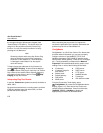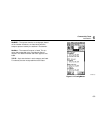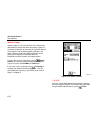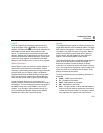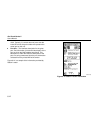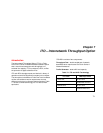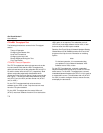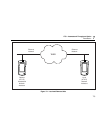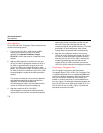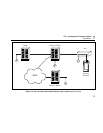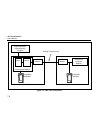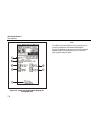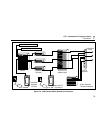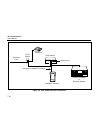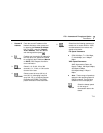
OneTouch Series II
Users Manual
7-4
Basic Operation
For the ITO and xDSL Throughput Tests, starting the test
causes the following actions:
1. The local unit (ATU-R for xDSL) sends an ARP
request to the remote unit (ATU-C for xDSL)
specified in its Remote IP Address (Target
ATU-C IP in xDSL) and waits for a response to that
request.
2. After the ARP response is received, the local unit
(ATU-R for xDSL) requests the remote unit (ATU-C
for xDSL) to generate traffic using the local unit’s
(ATU-R for xDSL) user-configured duration, data
pattern, rate, and frame length. The local unit (ATU-R
for xDSL) waits for the remote unit (ATU-C for xDSL)
to acknowledge the receipt of the traffic generation
request.
The number of frames per second for the upstream
and downstream bit rates is also calculated and
displayed. The Ethernet preamble and
inter-frame gap are used in this calculation and the
number of frames per second is rounded up.
3. After the remote unit (ATU-C for xDSL)
acknowledges the receipt of the traffic generation
request, both units zero their counters and setup for
tracking the number of packets received from the
other unit. Then, both units generate the user-
configured traffic for the specified duration. The traffic
generated is IP level data-grams, which allows
routing. Both units transmit traffic simultaneously.
4. After the user-configured duration, the local unit
(ATU-R for xDSL) requests the remote unit (ATU-C
for xDSL) to send the number of packets counted
from the local unit (ATU-R for xDSL). Knowing the
number of packets sent and received from the
remote (ATU-C for xDSL) and itself, the local unit
(ATU-R for xDSL) calculates and displays the results.
Conducting a Throughput Test
The Throughput Test is part of the Internetwork
Throughput Option (ITO) or xDSL. The Throughput Test
is a double-ended test of line or network bandwidth that
requires two Network Assistants. After configuring each
unit, you connect the remote and local units to your
network in locations that allow you to test between the
two units. Figure 7-2 shows the relationship between the
local unit (ATU-R unit, for xDSL) and remote (A, B, C, or
D) units (ATU-C unit, for xDSL). Figure 7-3 shows the
equivalent connections for xDSL.



